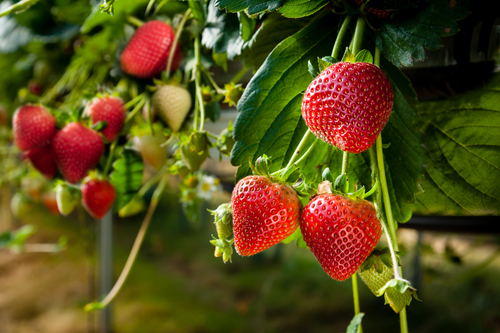By Alison DeLoach
Plant geneticists are always searching for ways to improve fruit quality. At the recent North American Strawberry Growers Symposium Conference in Orlando, Florida, Kim Lewers, plant geneticist with the U.S. Department of Agriculture, presented her research and the methods she uses to breed strawberries.

Lewers discussed in detail how she breeds for certain traits, such as disease resistance and improved fruit quality. She said for today’s consumers, the most important fruit quality is how long it will keep in the refrigerator while still looking and tasting good.
Lewers begins the breeding process in a field where her selections are grown in a six-plant plot for each cultivar. The fruit is harvested into two buckets; one is for the good fruit and the other is for the rotted fruit. Each type of fruit is then weighed separately. This provides Lewers with a numeric value for the amount of rot to expect in the field. Next, she measures the pH, acidity and Brix (the amount of sugar in the juice).
Plant breeders typically breed for multiple traits at once. However, sometimes growers and consumers place emphasis on certain traits. Currently, the disease anthracnose crown rot is a threat to growers in the South. Lewers said she is preparing for this disease now before it spreads to strawberry fields in the northeast area. This is an example of how a breeding program can change its trait preferences.
“It’s very rare to get a plant that does everything perfectly,” said Lewers. When selecting cultivars, she picks ones that are “fuss free,” and good for both consumers and growers. She says serving both the nursery industry and consumers can be a difficult task. The nursery industry wants a plant that is easy to grow, while consumers are looking for fruit that tastes good and lasts until their next shopping trip.
When it comes to finding the best taste, Lewers said she and another colleague taste the strawberry several times at each stage of the breeding process. She begins the breeding process with 12,000 seedlings and ends up with around 120 seedlings she selects to go to the next phase.
Lewers examines each plant individually several times throughout the fruiting season. She looks to see if the plant has a lot of attractive fruit. After she finds the plants with the prettiest fruit, she squeezes it to see if it’s firm enough, rubs the skin to see how tough it is, and then tastes it. If it tastes good, she propagates it. If it tastes bad, she throws it out. If the plant isn’t susceptible to any disease, it is propagated that same year in the six plots, referred to as the observation plots. In the next spring, pH and Brix data is collected for the fruit.
Currently, Lewers is working on a machine that uses infrared light. Once it is calibrated, she will be able to put a piece of fruit on the machine and non-destructively test the fruit for Brix and pH.
Lewers also mentioned she hosted a panel last year of trained taste-testers. Fruit was evaluated from 10 different cultivars based on several different fruit-quality factors, including flavor, aroma, sweetness, acidity, texture and how pretty or fresh it looked.









